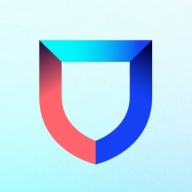


Tenable Security Center and Lacework FortiCNAPP are both major players in vulnerability management and security surveillance. Tenable appears to have an edge due to its strong vulnerability scanning capability and comprehensive asset discovery.
Features: Tenable Security Center is known for advanced vulnerability scanning, the ability to create flexible policies, and comprehensive asset discovery which is critical in large environments. It also offers customizable dashboards and integrates well with third-party solutions, aiding in vulnerability prioritization. Lacework FortiCNAPP excels in anomaly detection, compliance reporting, and continuous multi-cloud monitoring, offering insightful security postures. It provides robust alerts and simplified compliance management.
Room for Improvement: Tenable requires improvements in report customization and integration with other tools. There is also a need for enhanced executive-level reporting and simplified configuration. Lacework needs better remediation features and improved customer communication regarding updates. Additionally, handling ephemeral resources and integrations with third-party tools are areas that need work.
Ease of Deployment and Customer Service: Tenable Security Center is primarily on-premises and has efficient technical support, though some users note regional inconsistencies. Its deployment can be complex. Lacework FortiCNAPP, deployed in public and private clouds, offers consistent support but has minor issues with alert setup and communication clarity.
Pricing and ROI: Tenable Security Center is perceived as more expensive, justified by its features and strong ROI. Users note savings on manpower due to efficient scanning. Lacework FortiCNAPP, though slightly costly, offers stable pricing and flexibility. Tenable's ROI benefits from breach prevention, while Lacework's ROI comes from cost avoidance through preemptive security measures.
| Product | Market Share (%) |
|---|---|
| Tenable Security Center | 3.9% |
| Zafran Security | 1.1% |
| Lacework FortiCNAPP | 1.3% |
| Other | 93.7% |



| Company Size | Count |
|---|---|
| Small Business | 4 |
| Midsize Enterprise | 4 |
| Large Enterprise | 3 |
| Company Size | Count |
|---|---|
| Small Business | 22 |
| Midsize Enterprise | 10 |
| Large Enterprise | 26 |
Zafran Security integrates with existing security tools to identify and mitigate vulnerabilities effectively, proving that most critical vulnerabilities are not exploitable, optimizing threat management.
Zafran Security introduces an innovative operating model for managing security threats and vulnerabilities. By leveraging the threat exposure management platform, it pinpoints and prioritizes exploitable vulnerabilities, reducing risk through immediate remediation. This platform enhances your hybrid cloud security by normalizing vulnerability signals and integrating specific IT context data, such as CVE runtime presence and internet asset reachability, into its analysis. No longer reliant on patch windows, Zafran Security allows you to manage risks actively.
What are the key features of Zafran Security?
What benefits can users expect from Zafran Security?
In industries where security is paramount, such as finance and healthcare, Zafran Security provides invaluable protection by ensuring that only exploitable vulnerabilities are addressed. It allows entities to maintain robust security measures while allocating resources efficiently, fitting seamlessly into existing security strategies.
Lacework FortiCNAPP provides robust cloud security, combining vulnerability management and multi-cloud insight with user-friendly controls, machine learning detection, and compliance support.
Lacework FortiCNAPP specializes in cloud security by merging machine learning anomaly detection with agent-based vulnerability management to offer detailed alerts and compliance reports. Its comprehensive approach allows continuous monitoring across AWS and Kubernetes, providing insights from an attacker's perspective. The platform offers automation and seamless Slack integration, facilitating collaborative and efficient cloud security management. Users value its ability to handle multi-cloud environments and scan IAC scripts, configurations, and compute nodes across AWS and GCP.
What are the key features?Organizations across sectors leverage Lacework FortiCNAPP for cloud security, focusing on compliance, security posture, and vulnerability management. It is widely used for monitoring AWS and Kubernetes environments, scanning IAC scripts, configurations, and securing compute nodes. It supports multi-cloud security posture management and log ingestion, enabling companies to maintain strong cloud infrastructures without dedicated security layers.
Get a risk-based view of your IT, security and compliance posture so you can quickly identify, investigate and prioritize your most critical assets and vulnerabilities.
Managed on-premises and powered by Nessus technology, the Tenable Security Center (formerly Tenable.sc) suite of products provides the industry’s most comprehensive vulnerability coverage with real-time continuous assessment of your network. It’s your complete end-to-end vulnerability management solution.
We monitor all Vulnerability Management reviews to prevent fraudulent reviews and keep review quality high. We do not post reviews by company employees or direct competitors. We validate each review for authenticity via cross-reference with LinkedIn, and personal follow-up with the reviewer when necessary.